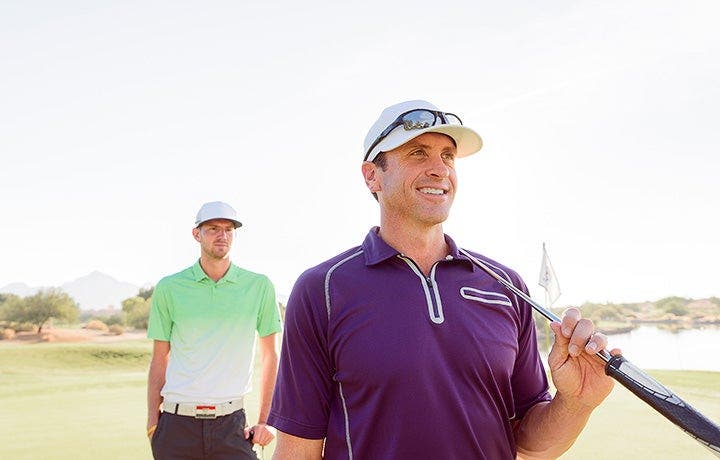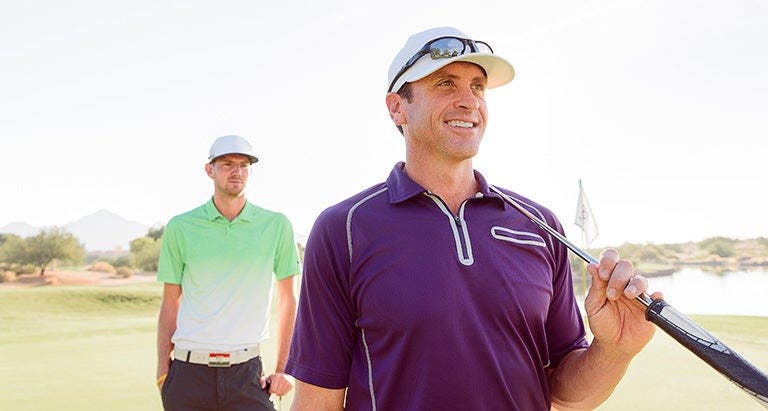6 Workouts that Build Life Skills


Exercise and working out have the obvious benefit of bettering your life physically. But some types of training, group fitness, and sport-specific classes have other advantages as well. You might not even realize it, but depending on the activity you’re partaking in, you may also be learning a life skill. Some classes such as lifeguard training may be more obvious, but did you know activities like dance class and a round of golf can also serve as tools to help you gain other skills in your life? Read on to learn about some of the best multitasking fitness activities you can try.
Dance classes
When it comes to dance classes, don’t be fooled by the elegant outfits, high-heel shoes, or sometimes made-up faces of those taking class—dance is a killer full-body workout. Where the movements in other types of cardio exercise, like running, cycling, and rowing are mostly monotonous, dance choreography makes sure the moves are constantly changing.
The benefits of this are twofold, explains Sadie Kurzban, founder of 305 Fitness dance studios located in New York City, Boston, and Washington, D.C . “We’re improving neuromuscular efficiency and we’re training our hearts to be stronger,” she says. “Moving from upper body moves to lower body moves means we’re getting our bodies to quickly shuttle blood from one part of the body to the next, with no rest. This type of training has been shown to be the most effective for your blood vessel and heart health.”
Real-life translation: Dance class can help you wow on the dance floor, whether it be at a wedding (especially if you’re taking ballroom classes) or another social event. “They say that dancing is 50 percent from the neck up,” says Kurzban. “Smile, have fun, and relax your jaw. After a few classes under your belt, you'll feel more confident and be able to shine on the dance floor!”
Golf
You might not know this, but golf is a ballistic sport, where speed and power need to be generated by the body. And because of the lengthy season, golfers have evolved functionally to withstand the wear and tear on the body, explains Don Saladino, owner of Drive 495 in New York City. “An enormous amount of mobility, as well as strength and power are needed to be obtained to optimize the game of golf,” he says. “In the past a golfer was never considered an ‘athlete.’ But now looking at the most successful players, many are built like they came straight out of the weight room. Their bodies have to be functional to the point where they can get into positions while maintaining optimal speeds.”
RELATED: Ready, Set…Golf!
Real-life translation: There’s a lot of walking in golf. Rounds can cover up to five miles at a very reasonable pace. This allows for time to chat with those with whom you’re golfing. And because of golf’s reputation as a more elitist activity, many find themselves often teeing off with co-workers or potential business partners. “Because of the pace which golf is played at, it enables conversation, which can open up the door for great business and life discussions,” says Saladino.
Jujitsu and other martial arts
If your knowledge of martial arts starts and ends with “wax on, wax off,” you can’t even begin to understand the fitness benefits of this form of movement. “Taking a martial arts class can impact you immensely when it comes to developing whole body coordination,” explains Joe Gonzalez, who has studied and trained in martial arts for eight years.
RELATED: Reasons You Should Take a Self Defense Class
Most classes (especially ones like jujitsu) consist of a warm-up, learning and practicing a few specific moves, and then live sparring. “Many schools use the warm-up as a conditioning session, so there are lots of bear crawls, sit-ups, push-ups, and other exercises,” says Keith Wittenstein, a brown belt in Brazilian jujitsu. “The sparring is extremely challenging physically, because you’re moving constantly and trying to wrestle an opponent who is trying to submit you.”
Real-life translation: Martial arts are also mentally challenging, though, and can help individuals develop problem-solving skills of the highest order. “I believe that jujitsu develops the ability to be calm in the face of conflict,” says Wittenstein. “It trains people to become calm under pressure and to be sensitive to an opponent's moves. The skill of being able to read people and to react quickly, and solve problems, is extremely valuable outside, as well as inside, of the dojo.”
Lifeguarding classes
While the life skill may be a bit more obvious when it comes to this class, swim training is always a great workout. It works the entire body. “Swimming can be either aerobic or anaerobic depending on whether you’re doing leisurely laps, or working on sprints for speed work,” says Diana Freedman, lifeguard instructor for the American Red Cross, and former Division 2 men’s and women’s swim coach at Adelphi University in New York. “There are workouts for every level and each exercises the heart muscle, as well as the lungs.”
And because swimming is a non–weight bearing low-impact activity, many doctors recommend it to those who are injured or older individuals, making it a lifetime sport.
Real-life translation: Lifeguarding classes can help with socialization and build confidence at any age. “These classes not only improve your physical ability in the water, but they also teach you how to apply lifesaving skills in everyday situations,” says Freedman.
Yoga
Yoga is done at a slower pace than say running or jumping rope, but it still raises your heart rate and gets the blood flowing. While there are numerous types of yoga classes, during most you can expect to work on strength and flexibility, and to have to hold yourself in challenging poses or flow through a series of poses for different lengths of time.
RELATED: Yoga Classes, Defined
Real-life translation: Through this practice, yogis also learn how to move past discomfort in their lives. “All yoga teaches us how to breathe, stay present, and move past the discomfort by tapping into that deep parasympathetic breath,” says Kristin McGee, celebrity yoga instructor in New York City and author of Chair Yoga: Sit, Stretch, and Strengthen Your Way to a Happier, Healthier You. “In life, we will always encounter situations that can be uncomfortable, whether it’s dealing with relationships, or a painful moment, or an actual physical ailment. Learning how to use our breath during these times can really help with the pain and emotional stress.”
CrossFit
Chances are you’ve heard about CrossFit, but if you think it’s just about doing Olympic lifts and kipping pull-ups, you’re wrong. CrossFit, by definition, is constantly varied functional movements performed at high intensity. But these movements can also be modified for different skill levels, so anyone from a high school athlete to a grandmother can do CrossFit. “Most CrossFit classes consist of a general warm-up, then a sports-specific warm-up, followed by some strength or skill work that is usually then incorporated into the WOD or Workout of the Day that follows,” says Kenny Santucci, NASM, CrossFit L2 certified, program director at Solace in New York City. “You’ll finish with a cooldown or stretch.”
RELATED: Know Before You Go: CrossFit
The concept of CrossFit was built on general physical preparedness and on doing functional movements. “You learn to move the way you should be moving,” says Santucci, “and you can expect to become uncommonly good at the common.” So, while any CrossFit WOD is guaranteed to get your heart rate up and have you burning mega calories, you’re also going to be practicing movements that will hopefully improve your everyday life.
Real-life translation: “Life is all about picking things up, like groceries or your kids,” says Santucci. “Overhead lifts mimic things like picking up a suitcase and putting it into an overhead bin on a plane. And then exercises like deadlifts transfer to practical strength more than any other lift.”
Before starting any new exercise routine, make sure to check in with your doctor.
